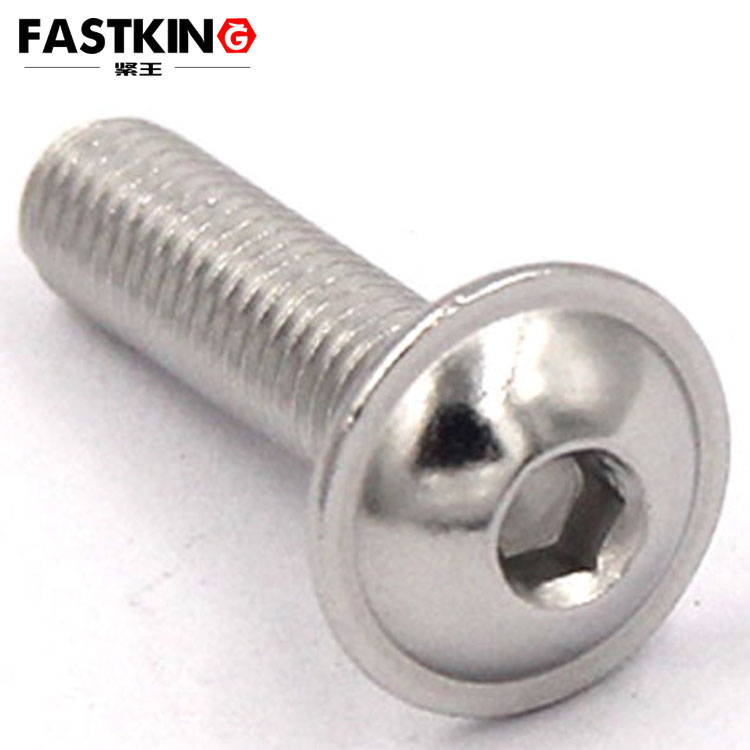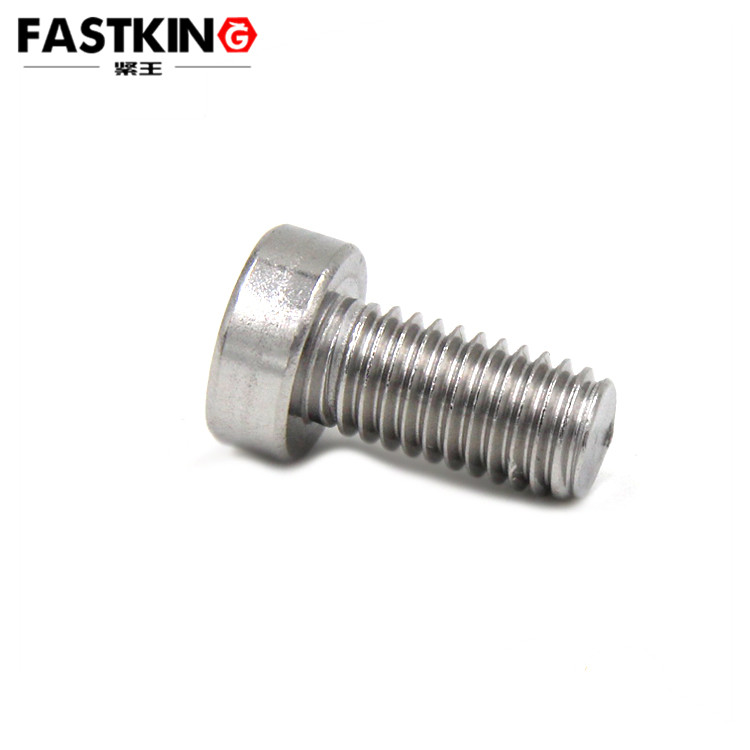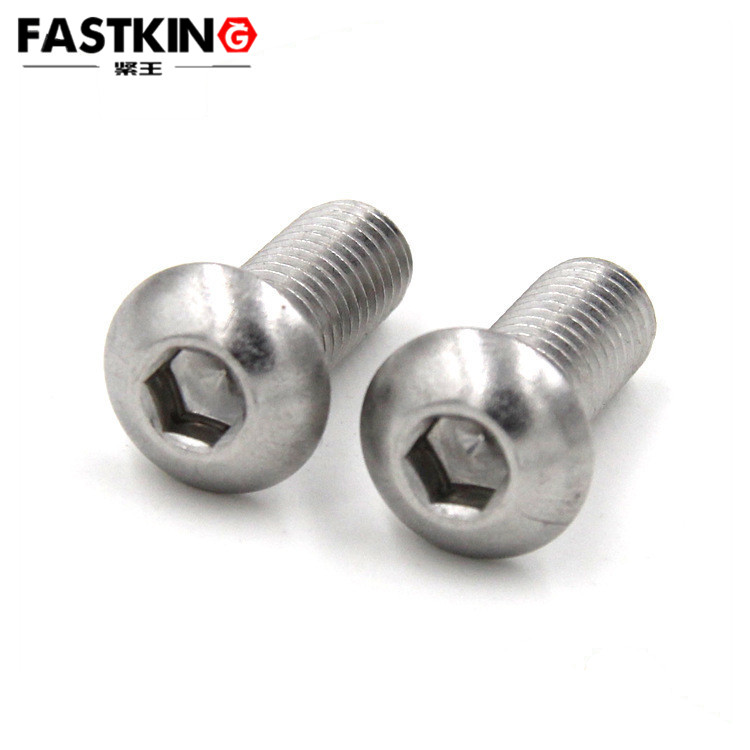Hexagon socket round head machine screw with gasket iso7380.2
Hexagon socket round head machine screw with gasket iso7380.2
Material: stainless steel 304316, grade 8.8 high strength and grade 12.9 high strength
It can also support non-standard customization.
ISO7380.2, officially titled ISO 7380-2:2019 Fasteners - Hexagon Socket Pan Head Screws with Washer - Product Grades A and B, establishes unified technical standards for hexagon socket pan head machine screws with integrated washers from three aspects: dimensional parameters, performance requirements, and material specifications. This ensures interchangeability and reliability of products manufactured by different suppliers:
The standard clearly defines key dimensions of the screw body and integrated washer, with core parameters meeting the following requirements:
-
Thread Specifications: Covers M2-M12 (commonly used in industrial applications), with thread dimensions complying with ISO 898-1 (Mechanical Properties of Fasteners Made of Carbon Steel and Alloy Steel - Part 1: bolts, Screws and Studs). The major thread diameter follows h6 tolerance (e.g., M4 major diameter is 4mm, tolerance: -0.012/-0.028mm). This ensures precise engagement with the threaded hole of the connected component, preventing thread stripping (due to excessive looseness) or thread damage (due to excessive tightness).
-
Head Dimensions: The pan head diameter (dk) is 1.5-1.8 times the major thread diameter (e.g., M5 pan head diameter is 8.5mm, tolerance: +0.3/-0.2mm). The head height (k) is 0.5-0.6 times the major thread diameter (e.g., M5 head height is 2.5mm, tolerance: +0.15/-0.1mm). This design balances sufficient head strength and adaptability to limited installation space.
-
Hexagon Socket Dimensions: The socket depth (t) must be ≥ 25% of the major thread diameter (e.g., M4 socket depth ≥ 1mm). The socket across-flats dimension (s) complies with ISO 4762 (Hexagon Socket Screwdrivers - Dimensions of Driving Ends) (e.g., M4 corresponds to a 3mm across-flats hexagon socket wrench). This ensures tight fit with the wrench and prevents slipping during torque transmission.
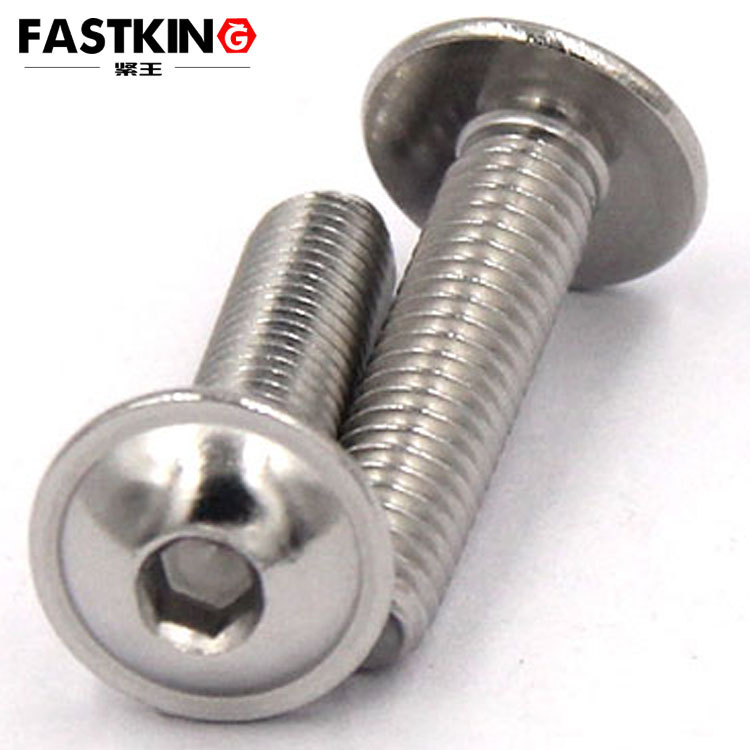
-
The washer is integrated under the screw head, fixed via one-piece molding or welding (one-piece molding is recommended by the standard to prevent washer detachment).
-
The washer outer diameter (dw) is 2-2.2 times the major thread diameter (e.g., M5 washer outer diameter is 10mm, tolerance: +0.4/-0.2mm). The washer thickness (h) ranges from 0.3-0.8mm (e.g., M5 washer thickness is 0.6mm, tolerance: +0.1/-0.05mm). This ensures sufficient contact area (the contact area of an M5 washer is approximately 69mm2), distributing tightening pressure and protecting soft substrates such as plastic and thin metal.
The total screw length (L) equals the sum of the thread length (l) and the combined thickness of the head and washer (e.g., for an M5×10 screw, the thread length is 6mm, and the combined head-washer thickness is 4mm). The standard specifies total length ranges for different specifications to avoid insufficient installation space due to dimensional deviations.
ISO7380.2 sets clear requirements for the mechanical properties and corrosion resistance of the screws to ensure long-term reliability:
Products are classified into Grade A (precision grade) and Grade B (general grade). Grade A is suitable for high-precision scenarios (e.g., medical equipment), while Grade B applies to general industrial scenarios. Mechanical properties of different materials must meet standards: for example, carbon steel screws (material grade 8.8) require tensile strength ≥ 800MPa and yield strength ≥ 640MPa to prevent fracture or plastic deformation under rated loads.
Recommended surface treatments include hot-dip galvanizing (Zn), passivation (Cr3+), and electrophoretic coating. Hot-dip galvanized layers must be ≥ 8μm thick (with a neutral salt spray test life ≥ 48 hours). After passivation, the surface roughness must be Ra ≤ 0.8μm, enabling short-term use in humid environments (e.g., bathroom equipment). For long-term salt spray resistance (e.g., marine equipment), stainless steel materials (e.g., A2-70, corresponding to 304 stainless steel) are required, with a neutral salt spray test life ≥ 1000 hours.
Materials allowed by the standard must comply with ISO 898-1 or ISO 3506-1 (Mechanical Properties of Fasteners Made of Austenitic Stainless Steels). Common materials and their applicable scenarios are as follows:
-
Carbon Steel: Such as 10B21 (cold heading steel), which can reach grade 8.8 mechanical properties after heat treatment. It is cost-effective and suitable for general industrial scenarios with dry, normal-temperature conditions (e.g., chassis housing fixation).
-
Stainless Steel: Such as A2 (304 stainless steel) and A4 (316 stainless steel). A2 stainless steel resists humid corrosion and is suitable for internal components of home appliances (e.g., washing machine motor fixation). A4 stainless steel resists salt spray and weak acids, making it ideal for outdoor or chemical equipment.
-
Non-Ferrous Metals: Such as aluminum alloy (6061-T6), which is lightweight and has good thermal conductivity. It is suitable for aerospace or lightweight equipment (e.g., drone frame fixation) but has low mechanical strength (tensile strength ≥ 276MPa), limiting its use to light-load scenarios.
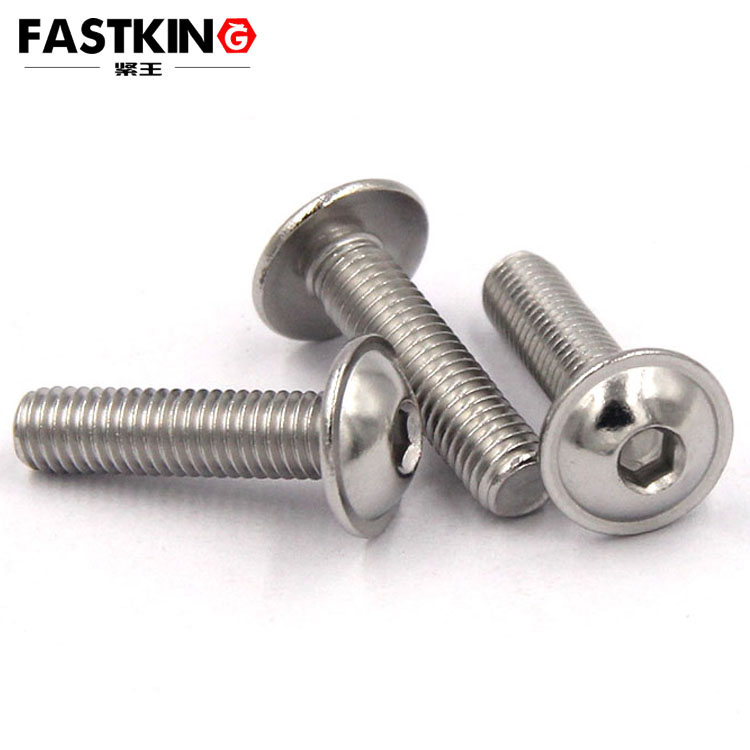
The core advantage of the hexagon socket pan head machine screw with washer (ISO7380.2) over the "ordinary screw + separate washer" combination lies in performance improvements brought by its integrated structure, specifically reflected in three aspects:
The integrated washer is fixedly connected to the screw head, avoiding "washer misalignment or loss" in traditional assembly, while achieving two key functions:
-
Pressure Distribution: By increasing the contact area with the connected component, the washer converts "localized pressure concentration" into "uniform distribution". For example, when installing a plastic housing, an M4 screw without a washer concentrates pressure on a 4mm-diameter threaded area, easily causing housing cracking. In contrast, an integrated washer (6.5mm outer diameter) distributes pressure to a 33mm2 contact area, effectively reducing the risk of substrate damage.
-
Scratch Protection: The washer surface typically undergoes high-finish processing (Ra ≤ 0.8μm), preventing direct contact between the screw head and the connected component surface. This reduces scratches during installation, making it particularly suitable for scenarios with high appearance requirements (e.g., consumer electronics housings).
The hexagon socket design provides two key advantages, meeting the fastening performance needs of industrial scenarios:
-
High Torque Transmission: The multi-surface contact (6 contact surfaces) between the hexagon socket and wrench enables higher torque transmission than cross-recessed slots (2 contact surfaces). For example, an M5 screw with a hexagon socket can withstand 12-15N·m of torque, while a cross-recessed slot only handles 8-10N·m. This makes it suitable for connection scenarios requiring high preload (e.g., motor end cover fixation).
-
Tamper Resistance: A dedicated hexagon socket wrench is required for disassembly. Compared to ordinary slotted or cross-recessed screws, this reduces the risk of equipment failure caused by unauthorized disassembly by non-professionals, making it suitable for protected equipment (e.g., industrial control cabinets).
The traditional "screw + washer" combination requires four steps: "pick screw - pick washer - fit washer - install". In contrast, the hexagon socket pan head machine screw with washer can be installed directly, reducing steps by 50%. In mass-production scenarios (e.g., smartphone assembly), each screw saves 2-3 seconds of installation time. Calculated based on 100,000 devices assembled daily, each using 20 screws, this translates to 55-83 hours of daily labor cost savings, significantly improving production efficiency.
Based on the performance characteristics of ISO7380.2, the screw is mainly suitable for three types of scenarios:
-
Electronic Equipment Field: Such as laptop motherboard fixation and router housing assembly. Select M2-M4 stainless steel (A2-70) specifications. The integrated washer protects PCB boards and plastic housings, while the hexagon socket head is compatible with electric wrenches for automated assembly, enabling precise torque control (e.g., 1.5-2N·m for M3 screws).
-
Precision Instrument Field: Such as medical diagnostic equipment (blood glucose meters, blood pressure monitors). Select Grade A M3-M5 specifications, with 316 stainless steel as the preferred material (resistant to disinfectant corrosion). The integrated structure prevents washer detachment from contaminating internal equipment, meeting medical cleanliness requirements.
-
Automotive Components Field: Such as car instrument panel fixation and door trim panel connection. Select grade 8.8 carbon steel (hot-dip galvanized) with M5-M8 specifications, which can withstand medium-low loads. The integrated washer distributes local pressure caused by vibration, reducing trim panel noise.
-
Material Selection by Load: For light loads (≤ 500N), choose A2-70 stainless steel; for medium loads (500-1500N), select grade 8.8 carbon steel; for heavy loads (> 1500N), upgrade to grade 10.9 alloy steel screws (confirm compliance with extended ISO7380.2 specifications).
-
Specification Selection by Installation Space: When the installation space height ≤ 5mm, prioritize M3 screws (combined head-washer thickness: 3.8mm) to avoid head protrusion interfering with other components.
-
Torque Control: Use a torque wrench to tighten according to ISO7380.2-recommended torques (e.g., 3-5N·m for M4 screws). Avoid insufficient torque (causing loosening) or excessive torque (resulting in head cracking or thread stripping).
-
Substrate Compatibility: When using on soft substrates (e.g., ABS plastic), pre-drill a guide hole (0.1-0.2mm larger than the minor thread diameter) to prevent substrate cracking.
-
Maintenance Inspection: In vibrating scenarios (e.g., automotive interiors), inspect screw tightness every 6 months. If washer deformation or thread rust is found, replace the screw promptly to avoid connection failure.

